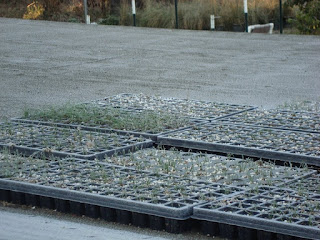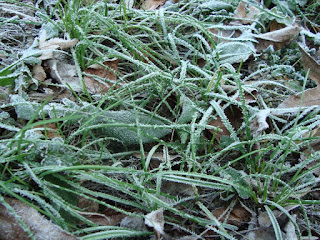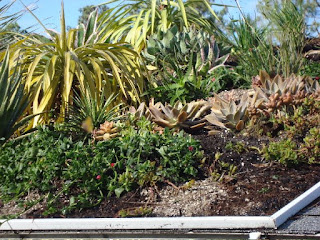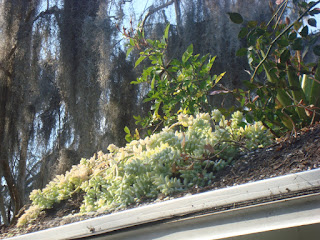
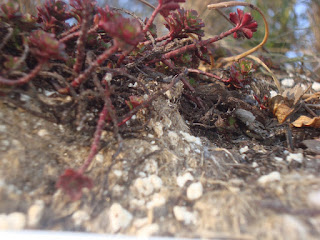


Note the frost and freeze scarring on the above plants. Most of the above scarring is minor. These however are the hardy ones (in the winter... - the summer is another story).
Last night the Channel Four weatherperson indicated that this winter had been the coldest since 1985. In my opinion, it has been the hardest on Green Roof Plants since we started putting plants up in the roof gutters years ago to see ow they'd survive.
We have seen day after day of daytime temperatures in the high 70's (F) with high relative humidity just to have a front come through and dry out the air and drop the temperatures into the low thirties and even mid-twenties (F). That is a fifty degree (F) temperature swing.
Add the desiccating winds and damaging hard frosts and you can see why Florida is so hard when it comes to specifying reliable green roof plants.
But the valuable information is being accumulated! We know what plants are reliably evergreen and can withstand the temperature fluctuations and more!
Wow. Florida Green Roofs are an exciting challenge!
Happy Green Roofing. Kevin

